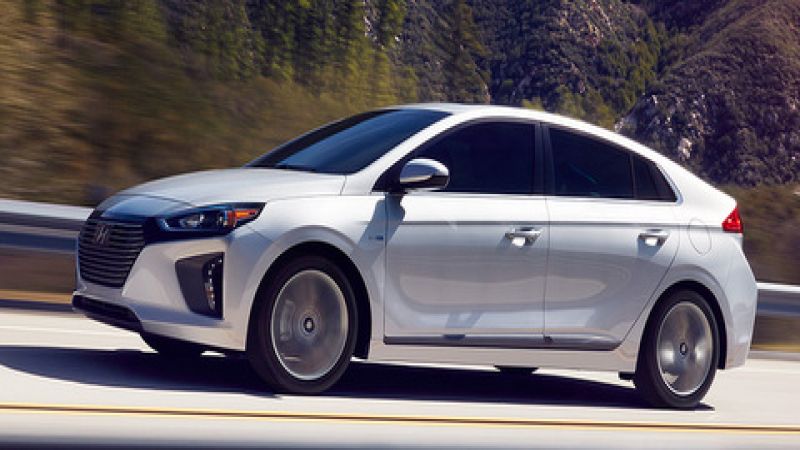Hyundai certainly has come a long way since its launch in 1986. For years, the automaker billed itself as the low-cost alternative, which, it indeed was. Its products were uniformly inexpensive both in material and price. Fast-forward to 2016 and the automaker has transformed radically. Now, Hyundai has matured into an automaker that offers best-in-class products. Its Kia subsidiary also makes similar products.
Genesis Brand Sets New Direction For Hyundai
For example, when Genesis appeared in 2008, it almost immediately became an award-winner. Though expensive for a Hyundai, the Genesis has gone on to sales success. Indeed, the automaker has spun it off as a separate marque, making Genesis its luxury division.
Leading Automaker’s Green Effort
Now, Hyundai has come out with another competitive marque, the all-new Ioniq, the leader of the automaker’s green effort. Ioniq will be offered in three versions when it hits dealers in California this year, a hybrid, a plug-in hybrid and a full electric.
Though expected sales volumes may be small, 30,000 globally for 2016, Hyundai is looking at Ioniq as a brand-builder, said Automotive News Europe. Ioniq represents the first time Hyundai has offered three green configurations in a single body style, a sleek sedan. The automaker’s European marketing chief, Jochen Sengpiehl, told ANE that Hyundai calls its marketing target “Generation Ioniq. They are not millennials, and they are not a specific age group because all ages are interested in sustainable transport.”
The Ioniq’s lines are very reminiscent of a coupe. Its lines sweep up from a front end that features a filler panel where you would expect the grille. There is a small intake panel at the lower edge of the front end, beneath the bumper. The sloping hood merges nicely with the swept windshield which carries the line through a curving roof and on through a hatchback whose smooth curve finishes the Ioniq very nicely. The rear end fits the packaging well. The effect is of movement, even when the car is standing still.
The Ioniq’s electric cruising numbers are reasonable. The plug-in hybrid/hybrid version of the Ioniq has a cruising range of 31 miles (50 kilometers) before its 1.6-liter four-cylinder powerplant cuts in to recharge the 8.9-kilowatt-hour lithium polymer battery. The plug-in hybrid/hybrid is driven by two motors, a 1.6-liter four-cylinder gasoline engine and a 45-killowatt electric motor. The electric motor is supplied by an 8.9-kilowatt-hour lithium polymer battery pack. The Ioniq’s all-electric version, driven by an 88-kw electric motor, has an impressive range of 131 miles. A 28-KwH battery pack supplies power to the electric motor. The electric motor’s horsepower equivalence is 120 hp. The all-electric version should be easily able to handle any commute.
One of the benefits of driving a hatchback is that you can haul things along with you. With the rear seat up, the Ioniq has 15.6 cubic feet of cargo space; with the seat down, it is 53.1 cubic feet.
Ioniq Features Outlined
The Ioniq features, among other things, automatic emergency braking, lane-change assistance, blindspot detection and rear lane change alert. It also features connectivity for Apple CarPlay and Android Auto. It also features wireless mobile phone charging.
Initial European pricing projections are 23,900 euros ($26,981) for the hybrid and 33,300 euros ($37,593) for the all-electric EV. Sales projections for this year are 30,000 globally.











